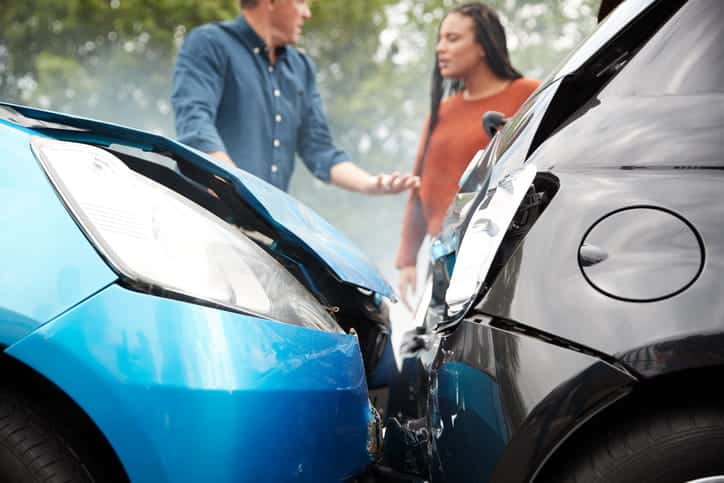
08 Feb Is California a No-Fault State?
If you or your loved ones have been in a car accident in the state of California, it’s important to understand your rights and know what to anticipate when filing a case in an at-fault state like California. Our experienced car accident attorneys at Sette Law can help guide you through what to anticipate when handling a car accident lawsuit in California and how no-fault states differ from at-fault states.
What Is A No-Fault State?
If you want to bring a car accident claim in a no-fault state, you will likely have to make an injury claim with your personal car insurance company in spite of which party was responsible for the incident. These no-fault claims are made through personal injury protection (PIP) provisions within a car insurance policy. Like any type of legal dispute, it is safe to assume that no-fault rules differ depending on the jurisdiction in which the claim is being filed. It is important to discuss these elements with an experienced car accident lawyer.
On the other hand, in an at-fault state such as California, you can expect the responsible party to be obligated to pay for any damages caused by the accident. If you are involved in a car accident lawsuit in California, the attorneys at Sette Law can guide you through what to expect — whether you’re the responsible party or the victim.
Pros: No-Fault Laws Help Keep Costs Low
In addition to keeping costs low, no-fault states typically ensure quick payout claims for the parties involved in the car accident. Furthermore, the parties of a car accident case in a no-fault state can expect broad insurance coverage, including areas such as medical bills, lost earnings, and other damages pertaining to the car accident.
Cons: Limited Legal Options
Given the limitations of filing a claim through insurance, it’s not surprising that there are limited legal options in no-fault states, which may not always be favorable to some accident victims. One of the biggest downsides to no-fault states may be the fact that a victim is not permitted to receive any compensation for pain and suffering. In addition to these limitations, no-fault state downsides include higher premiums, more traffic deaths, and fewer penalties for at-fault drivers.
No-Fault Vs. At-Fault And Car Insurance
No-fault and at-fault states have different relationships with car insurance companies. These relationships are essential to understanding your rights in your particular state as well as what damages you should anticipate receiving or being liable for. If you want to know more about the differences between no-fault and at-fault states and their respective relationships with car insurance companies, be sure to inquire about these differences with the personal injury attorney handling your claim.
Let Sette Law assist you in handling your car accident claims.
What To Know About Car Insurance In California
If you’re involved in a California car accident case, it’s important to understand how car insurance in this state works. Some of the main things anyone in California should know about car insurance include the following:
Claims Can Be Filed With Your Insurance Company
Even though it’s an at-fault state, you can still file car accident claims with your insurance company. It’s important to promptly notify your insurance company to ensure your claims are filed within any necessary timeframes you need to meet.
Your Insurance Company Can Try To Recoup From At-Fault Drivers’ Insurance
Your insurance company will communicate with the opposing party’s insurance company over the duration of the case to ensure you are properly compensated for your damages.
Comparative Negligence
Comparative negligence is used in car accident cases to reduce the amount of damages to which a plaintiff is entitled based on any degree of responsibility they have in contributing to the incident. In a situation where the court finds that the plaintiff’s negligence also led to the accident, the amount of damages awarded will be calculated accordingly.
California’s Insurance Minimum Requirements
Under California insurance laws, the minimum liability insurance requirements are:
- $5,000 for property damage
- $15,000 for injury/death to one person
- $30,000 for injury/death to more than one person
What To Do If You Have Been Injured In A Car Accident
The standard protocol regarding what to do following a car accident in California is as follows:
- Police will arrive on the scene and document a police report of what happened
- Both drivers should contact their insurance company to report the accident
- The insurance companies will investigate the accident
- A determination of fault will be reached
- The victim will receive compensation from the other driver’s insurance company
How Can Sette Law Help Me After A Car Accident?

This may seem confusing, but don’t be intimidated. Help is here for you. We understand how difficult these topics may be to grasp. In fact, the definition of fault (liability) is often debated in court. Here at Sette Law, we are eager to assist car accident victims in Sacramento to navigate this difficult landscape and obtain maximum compensation for any damages incurred, regardless of the cause of your accident.
Have you been injured in a car accident? Let Sette Law help.
Sources:
Comparative Negligence. (2022).
Goguen, D. (2024). What is No-Fault Car Insurance and How Does a Claim Work?
Insurance Requirements. (2024).
